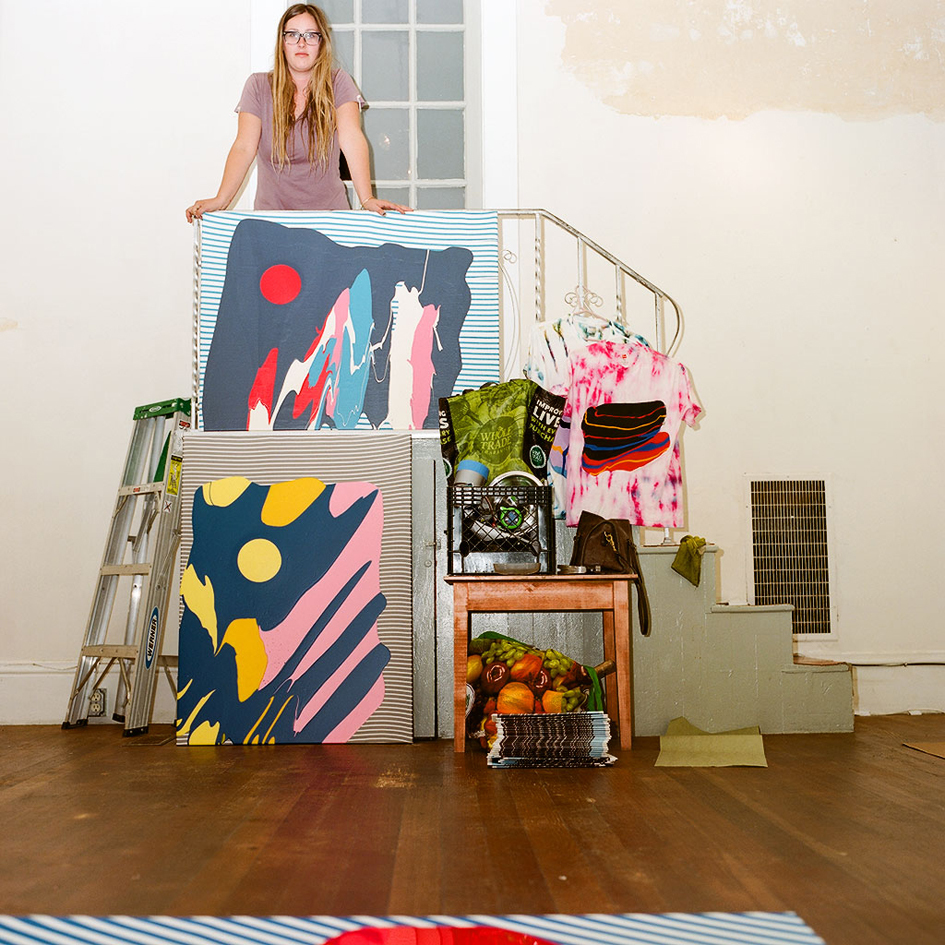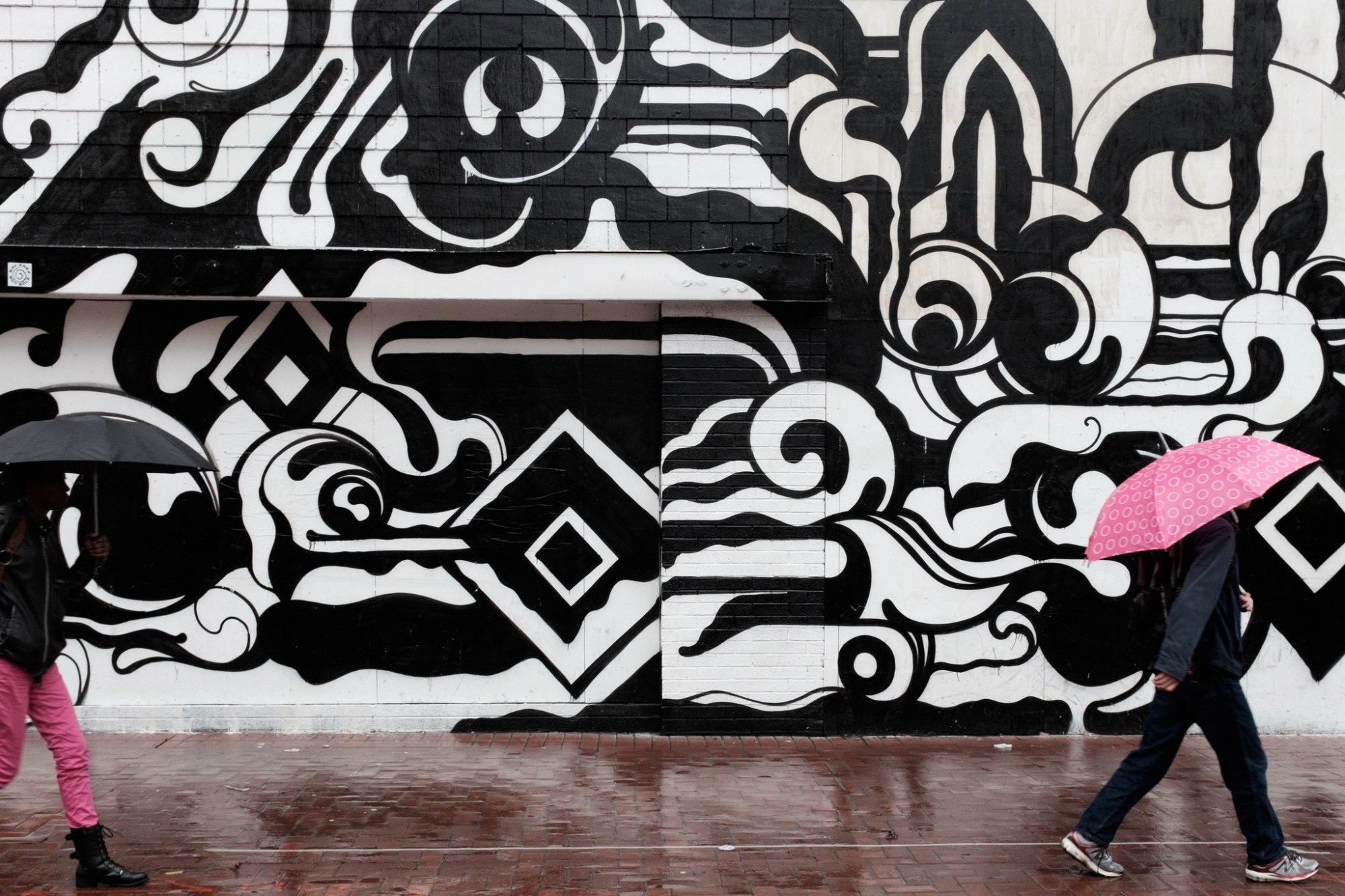The tech scene in the San Francisco Bay Area and its resulting culture have become so outrageous that people often reach for the Renaissance as a metaphor. “It reminds me a lot of the Medici Family,” says Miranda Lee Morgan, an architect and interior designer working in San Francisco.
It’s true–tech functions as a benefactor of sorts for the SF art community. For every hot new startup or billion-dollar company there is a mid-century-inspired, graffiti-tagged office space to go with it. And there’s often an SF-based artist behind the scenes to give the company a dose of the cool factor.
But it’s not a completely symbiotic relationship–even if these companies commission certain artists for their campuses, they aren’t buying art for their homes. And then there’s the issue of rising rents, which force local talent out of the city.
Nevertheless, the art scene is thriving in SF–cool galleries are popping up and plenty of prestigious art schools are based here–but it might be in spite of tech’s influence, rather than a result of it.
Sam Gray is the art director of Rapt Studio, a multidisciplinary design firm that has created office spaces for the likes of Google, Linkedin and Adobe. He tries to work with local artists and has enlisted SF favorites like Mike Giant among others.
But Gray admits that tech hasn’t been wholly helpful to art in San Francisco. “If you look at art scenes that have been influential, they happen because there’s a pressure system around them that provides an environment of creative thought and expressing ideas, and I’m not convinced that the tech world is doing that for people necessarily.”
Yes, a happening art scene, like the one currently burgeoning in Detroit, requires more than just nearby rich people to buy art. In fact, Bay Area artists working closely with their corporate clients might be the exact opposite of what makes culture blossom.
It seems as though, here in San Francisco, for every mural that goes up in a corporate office space, another artist gets pushed out. Giant left for Boulder Colorado in 2013 when he couldn’t afford to stay. Others are heading south for LA where the rent is cheaper.

Jenny Sharaf is a 30-year-old artist in San Francisco who observed the changing landscape and set out to do something about it. “After I graduated from my MFA I was like, ‘I’m going to solve the tech meets art problem!'” Sharaf says. She approached startups in San Francisco and asked if she could host pop-ups and curate group shows in their hallways and lobbies. They agreed. “They always told me there was no budget but that it would maybe lead to sales. That was the temperature back then.”
But the shows never actually led to sales. “I get that even if you’re in tech you’re making a decent amount of money, but your rent is really high you spend a lot on food and Uber and weed and all of a sudden you have no more money for art. Or that’s what I hear.”
Brian Barnecio is a well-known SF street artist whose work you can now find on the walls of Google.He might be most famous for a giant mural that can be viewed from the Cal Train coming into the city, the corridor that literally connects Silicon Valley to San Francisco. He’s benefited from tech’s support of the arts, but he also acknowledges that the scene isn’t what it used to be.
“The late 90s and early 2000s was a really young vibrant art scene,” Barnecio said, citing fecalface.com as the website that brought it all together. “Everyone wanted to be a DJ or an artist, there were group shows everywhere. It was the first tech bubble. The tech world wasn’t really getting into the art back then. I think a lot of that happened in the second tech bubble, the one we’re in now.”
It was a scene that centered around the 90s DIY skater aesthetics of the Mission School, as profiled in the popular book and documentary Beautiful Losers in 2004. Nostalgia for the era seems to be at a high–artist Barry McGee, a core member of the group, was profiled in the New Yorker just this week (along with his deceased wife, the legendary Margaret Kilgallen). One of McGee’s pieces was recently installed at Facebook.
Giant agrees that the 90s were an inspiring time for SF. “I arrived in September of 1993 and the underground art scene in San Francisco was still kicking. The legacy of the psychedelic era was still alive and the graffiti-writing scene was exploding. “
According to Barnecio, the influx of big money has allowed artists the luxury to be creative. He describes working for tech companies as liberating. “They’re like, ‘Do whatever, go for it’ and the gallery world is not like that, so for me it was really nice.” Barnecio is currently working on some murals for Google. What does he get paid for a piece like that? “They’re not stingy,” he replies.
Giant has a different point of view: “I did a mural job for Adobe a few years ago. That’s really the only tech work I’ve taken. It was a messy job, but we got through it. It was as enjoyable as any of the other freelance jobs I get. I could take it or leave it.”
It makes sense that graffiti would be the go-to style of art for the tech set–both groups see themselves as rebels of a sort. Daniel Pan is the owner of 1AM gallery, a space that specializes in street art. He’s often asked by companies to give presentations on the culture of graffiti. 1AM even sells spray paint. “This rebellious attitude, edgy, disruptive, I think that’s the key word. Disruptive. These companies aim to disrupt the system as it is and it’s in the same vein as the artists we represent.”
But if you’re not a graffiti artist commissioned by Google, or an artist-in-residence at Facebook–a real program offered by the company that has hosted muralists like David Choe and Ian Ross–you’re not necessarily benefiting from the tech world’s deep pockets.
“The new SF that’s here, they’re really intelligent, they’re well spoken and they’re coming into a foreign place. The first thing you do when you get to a new city, well buying art is not one of them,” says Pan.
Both Sharaf and Pan agree that the lack of an art market is problematic, but they’re not about to give up on the city.
Sharaf is the founder and director of a rogue art happening called Parking Lot Art Fair that took place this May. Artists, collectors and professors flocked to the parking lot across from SF’s more commercial Art Market San Francisco. It caught the city of San Francisco’s attention, which has now commissioned Sharaf to organize a series called Art Night SF. The Thing Quarterly, an object-based publication, is just one of the creators that will present work at the show.
The art scene in SF has recently splintered across the city because of rising rents, with galleries moving to the Tenderloin and Oakland. Et Al. is a gallery located in the basement of a dry cleaner in Chinatown and Alter Space, founded in December 2011, is an artist-run gallery space, based in a former leather manufacturer and S&M shop in SOMA. Tech companies will rent out the gallery for parties and events, but they don’t come asking to hire artists for their office spaces.
“We’re right in the heart of a lot of tech offices and there is genuine curiosity,” said Kevin Krueger, the cofounder of Alter Space, who is also an artist and poet. “But at the same time, everyone has this idea that galleries are intimidating to go in. We try to be pretty inviting and we enjoy talking to new people that come through.”
Art Night SF will host its first event downtown in late September, strategically placed across the street from Twitter. “I hope museums and galleries get involved,” said Sharaf. “The work here is really good.”
Credits
Text Austen Leah Rosenfeld
